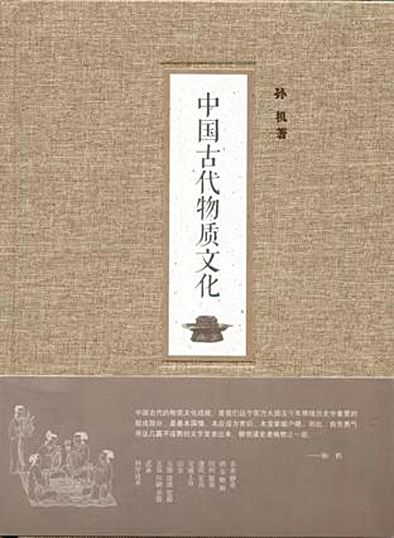Objects tell story of life in ancient times

Ancient Chinese Material Culture
Author: Sun Ji
Publisher: Zhonghua Book Company, 2014
The Beijing News released its Best Books of the Year on Jan. 6 in Beijing, which included Ancient Chinese Material Culture by Sun Ji, an antique expert at the National Museum of China.
The achievements of ancient China’s material culture survive as the most important products of thousands of years of glorious history. However, the passage of time has caused mankind’s memory to fade and lose sight of tradition.
From farming tools to meals, from clothes to architecture and furniture, from vehicles to jade and porcelain—the historical messages that are embodied in these relics are absent from ancient books.
By compiling and summarizing decades of research, Sun Ji is able to portray the evolution of history and culture that is reflected in these relics. His interpretation recreates scenes of daily life in ancient China by clarifying and filling the parts that have been lost in grand narratives of history.
Sun Ji’s work offers readers a window into ancient times. Through this book, relics serve not merely as entries listed inside of a museums’ catalogue but as vivid reminders of the past, said members of the Best Books Award Committee.
“The material culture that ancient Chinese ancestors created had been in a leading position until recent history. I hope, through this small book, that most of us can know the great contribution on material culture from our ancestors,” Sun Ji said at the award ceremony held at the Art Center of the National Library.
Yang Zishui, a research fellow from the Institute of Literature at the Chinese Academy of Social Sciences who has studied with Sun Ji for many years, said Ancient Chinese Material Culture can be categorized as a popular book rather than an academic work. However, writing a popular book requires deep insight and solid academic knowledge.
He added that Ancient Chinese Material Culture is a comprehensive demonstration of the author’s research, and it reflects Sun Ji’s deft ability to balance literature and archaeological materials.
“Its ability to capture the key links of development while exposing the causes and the evolution from an overarching perspective and detailed observation is what makes this book outstanding,” Yang said.
For example, the chapter “Textiles and Clothes” detailed the distinctions between “silkworm cocoon” in ancient times and “silkworm lines” and how barbarian women’s social status could be discerned according to their clothing.
Ancient Chinese Material Culture covers 10 sections of material culture, such as agriculture and food, alcohol, tea, sweets and tobacco, clothes, furniture, metals, musical instruments, weaponry and technology. The sketches in the book are drawn by Sun Ji himself, and most of the content is his original scholarship. The book has great significance for academic research and as much importance to the public.
Feng Daimei is a reporter at Chinese Social Sciences Today.
